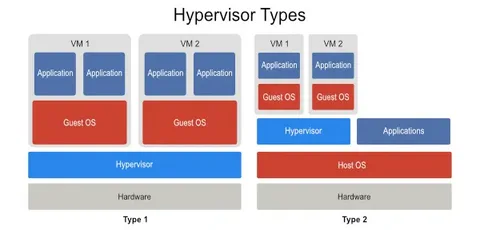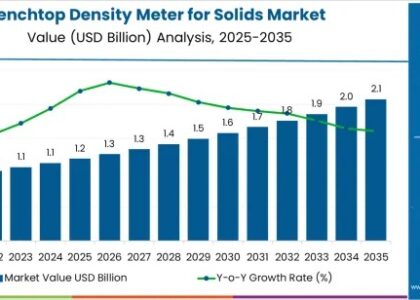The global embedded hypervisor market is expected to grow from USD 25.25 billion in 2025 to USD 89.56 billion by 2035 at a CAGR of 12% during the forecast period. Embedded hypervisors software layers enabling multiple operating systems to run concurrently on a single hardware platform are gaining rapid traction, particularly within automotive, industrial automation, aerospace, and telecommunications industries, due to their capabilities in enhancing virtualization performance, security, and real-time responsiveness.
In a world where devices are becoming more connected, intelligent, and autonomous, the demand for secure and efficient virtualization is growing rapidly. At the heart of this transformation lies a critical yet often unseen technology: the embedded hypervisor. Designed specifically for resource-constrained environments, embedded hypervisors are enabling a new wave of innovation in automotive systems, industrial automation, aerospace, consumer electronics, and beyond.
By allowing multiple operating systems or applications to run concurrently on a single hardware platform, embedded hypervisors are optimizing system performance, enhancing security, and reducing hardware costs—quietly reshaping the architecture of intelligent devices.
Get Ahead with Our Report: Request Your Sample Now!
https://www.futuremarketinsights.com/reports/sample/rep-gb-2190
Virtualization Tailored for Embedded Systems
Unlike traditional hypervisors used in enterprise data centers, embedded hypervisors are engineered to meet the unique demands of real-time, low-power, and space-constrained devices. These hypervisors create isolated environments—known as virtual machines—that allow different software stacks to coexist without interfering with one another.
This capability is especially valuable in applications where safety, security, and reliability are paramount. For example, in modern vehicles, an embedded hypervisor can run the infotainment system, navigation software, and advanced driver assistance systems on a single processor—each in its own secure domain.
A Cornerstone of Functional Safety and Security
Embedded hypervisors play a vital role in ensuring functional safety by enforcing strong isolation between critical and non-critical applications. This isolation prevents faults or security breaches in one domain from affecting others, which is essential for meeting industry standards in sectors like automotive (ISO 26262), aerospace (DO-178C), and industrial automation (IEC 61508).
Beyond safety, embedded hypervisors also strengthen cybersecurity by reducing the system’s attack surface. By enabling the use of security-hardened virtual machines, developers can compartmentalize sensitive operations such as cryptographic processing, secure boot, and remote updates—helping protect embedded systems from tampering and malware.
Flexible Architecture for Modern Demands
One of the key strengths of embedded hypervisors is their ability to support heterogeneous computing environments. They can run different operating systems—such as Linux, real-time OS (RTOS), and Android—simultaneously, each tailored to specific workloads. This flexibility allows developers to optimize performance, reduce latency, and reuse software assets across multiple applications.
With growing interest in edge computing and AI at the device level, embedded hypervisors provide the foundation for executing diverse and demanding tasks locally, without compromising on system integrity or performance.

Applications Across Industries
The embedded hypervisor market is expanding across a broad range of industries. In automotive, hypervisors support the consolidation of electronic control units (ECUs) in electric and autonomous vehicles, reducing complexity and cost. In medical devices, they ensure that life-critical applications run reliably alongside user-facing features like touchscreens and connectivity.
In robotics and industrial automation, embedded hypervisors enable secure and modular designs that can adapt to evolving operational requirements. Even in consumer electronics, they help balance high-performance features with the growing need for privacy and device management.
Challenges in Complexity and Real-Time Performance
Despite their benefits, embedded hypervisors face several challenges. Implementing virtualization in real-time systems demands extremely low latency and high determinism—requirements that are difficult to meet in environments with limited processing power and memory.
Ensuring compatibility with legacy hardware, maintaining certification for safety standards, and minimizing resource overhead are other critical concerns for developers. Continuous advancements in microprocessor design and real-time virtualization techniques are essential to overcoming these barriers.
Extensive Market Research: Complete Report and Findings
https://www.futuremarketinsights.com/reports/embedded-hypervisor-market
Fueling the Shift Toward Software-Defined Devices
As embedded systems become more software-defined, the role of embedded hypervisors will only grow in importance. They enable faster development cycles, greater scalability, and easier remote management—paving the way for modular, upgradable, and secure devices across the digital landscape.
The rise of containerization, edge AI, and software-defined networking is further reinforcing the need for lightweight, robust virtualization at the device level—positioning embedded hypervisors as key enablers of the next generation of smart systems.
Silent Architects of Embedded Intelligence
Embedded hypervisors may operate behind the scenes, but their impact is profound. By enabling secure, efficient, and flexible computing on a single hardware platform, they are transforming how embedded systems are built and deployed across industries.
From autonomous vehicles and industrial robots to medical monitors and smart appliances, embedded hypervisors are shaping a future where performance meets protection—and where innovation is powered by the unseen intelligence within.






